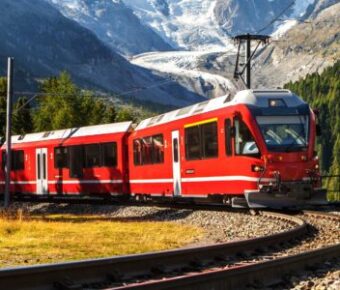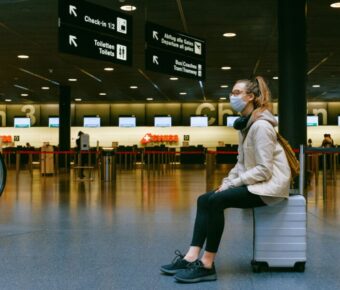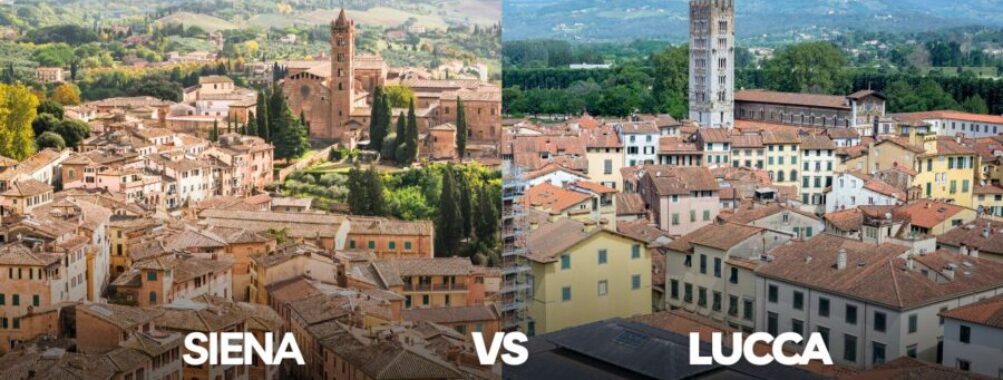
Siena vs Lucca: Which Enchanting Tuscan City Offers the Better Hidden Gems?
Many travelers scratch their heads when choosing between Siena and Lucca, two stunning gems in Tuscany. These Italian cities each offer unique charms that make picking just one a real challenge for anyone planning a day trip from Florence.
Siena is a more dramatic medieval city with its grand architecture and famous Piazza del Campo. At the same time, Lucca offers a more relaxed, intimate atmosphere perfect for slow-paced exploration along its tree-lined walls and quiet streets. Both cities make excellent day-trip choices from Florence, with easy train connections and walking-friendly historic centers.
Most travelers find themselves drawn to Siena when seeking rich history and impressive monuments, or Lucca when craving a laid-back day of wandering charming streets and cycling the ancient city walls. The choice often comes down to whether someone wants a more bustling, tourist-friendly experience or a peaceful escape into authentic Tuscan life.
Contents
- Historical Significance
- Ancient Roots and Rivalry
- Landmarks of Historical Importance
- Cultural Heritage and Art
- The Role of Art in Local Culture
- Noteworthy Museums and Galleries
- Architectural Wonders
- Siena’s Gothic Architecture
- Lucca’s Defensive Structures
- Culinary Delights
- Traditional Dishes and Wines
- Best Dining Experiences in Siena and Lucca
- Shopping and Local Crafts
- Exploring the Surroundings
- Day Trips from Siena and Lucca
- Nearby Towns and Natural Landscapes
- Nightlife and Entertainment
- Vibrant Nightlife Scene
- Cultural Events and Festivals
- Accommodations and Lodging
- Transportation and Accessibility
- Frequently Asked Questions
- What activities can visitors enjoy during a day trip to Siena or Lucca?
- Which town is more convenient to reach via public transport, Siena or Lucca?
- What are the unique historical highlights of Lucca compared to Siena?
- Can you compare the culinary experiences offered by Siena and Lucca?
- How do Lucca and Siena differ in terms of accommodation options for tourists?
- What are the hidden gems or less crowded attractions in both Siena and Lucca?
- More Travel Guides
Historical Significance
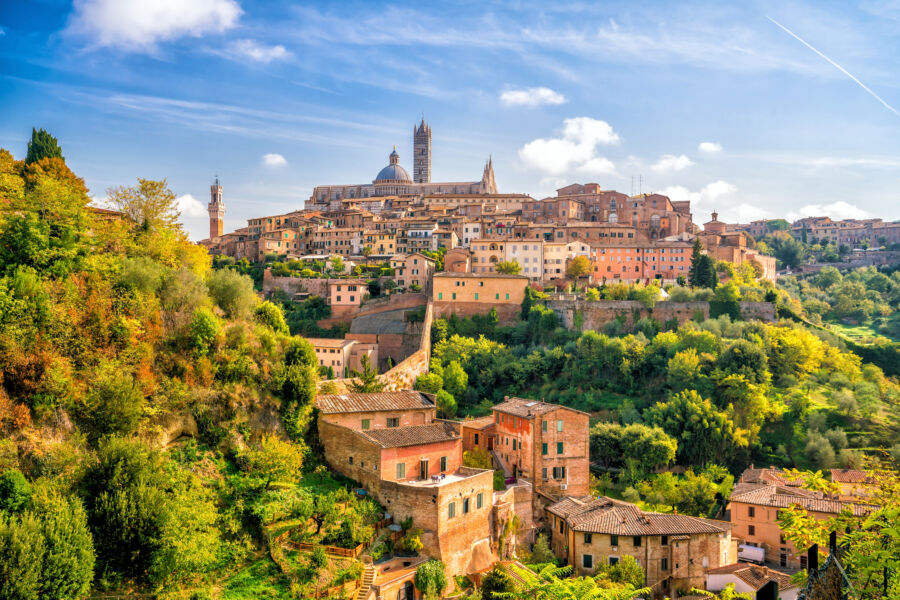
Both Siena and Lucca played significant roles in shaping Tuscany’s past, with each city leaving its mark through unique architectural treasures and fierce political rivalries.
Ancient Roots and Rivalry

Siena rose to power as a medieval banking capital, competing with Florence to control Tuscany. The city’s golden age ended when the plague struck in 1348, weakening it enough for Florence to gain the upper hand. The defeat changed Siena’s fate forever.
Lucca stayed independent longer than most Tuscan cities. The city’s massive Renaissance walls helped protect its freedom until the 1800s. These four-kilometer walls still stand today as a symbol of Lucca’s fierce independence.
Landmarks of Historical Importance
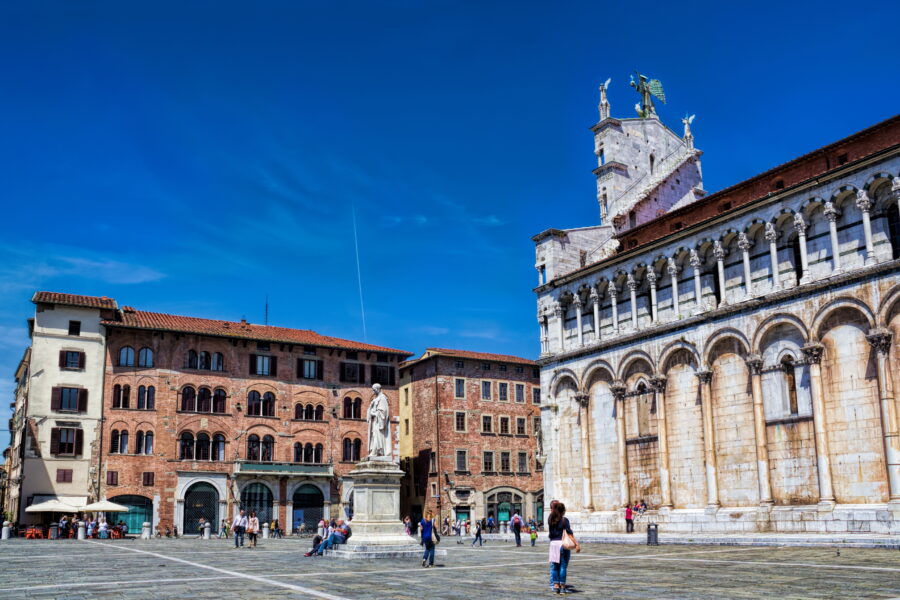
Siena’s stunning Duomo showcases the city’s medieval wealth. This black-and-white marble cathedral holds priceless art treasures and tells stories of Siena’s powerful past through its architecture.
The San Michele church stands tall in Lucca’s main square. Its detailed facade showcases the unique Lucchese style—a mix of Roman, Gothic, and Medieval designs that you won’t find anywhere else in Tuscany.
Siena’s shell-shaped Piazza del Campo has been the heart of civic life since medieval times. This grand square hosts markets, festivals, and the famous Palio horse race, which still runs today.
Lucca’s wide city walls now act as a park where people walk and bike. These walls protected precious silk trade routes, bringing wealth to medieval Lucca’s merchants and bankers.
Cultural Heritage and Art

Siena and Lucca possess deep cultural roots that shine through their artistic treasures and historic landmarks. Each city tells its unique story through centuries-old masterpieces, frescoes, and architectural wonders.
The Role of Art in Local Culture
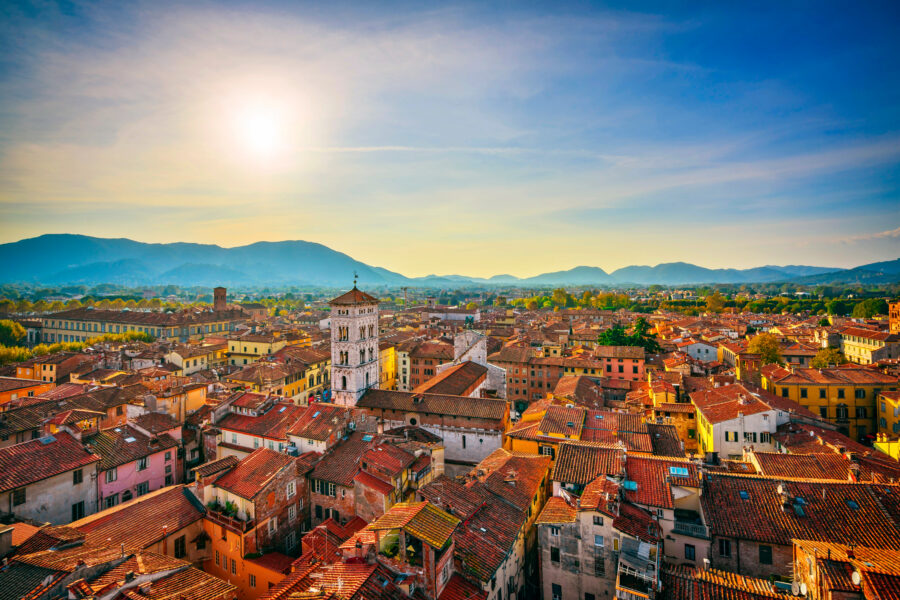
Siena’s art scene revolves around its Gothic heritage. The city’s streets burst with medieval paintings and religious artwork. You’ll spot ornate stone carvings on building facades and intricate marble decorations everywhere.
Lucca’s art reflects its glory days in the Renaissance. The city’s famous walls display military engineering as an art form. Walking through Lucca feels like a living museum where Roman and medieval influences blend.
Each city keeps its artistic traditions alive through local festivals and events. Siena’s Palio horse race features stunning medieval banners and costumes. Lucca’s comics festival brings modern artistic flair to its historic streets.
Noteworthy Museums and Galleries
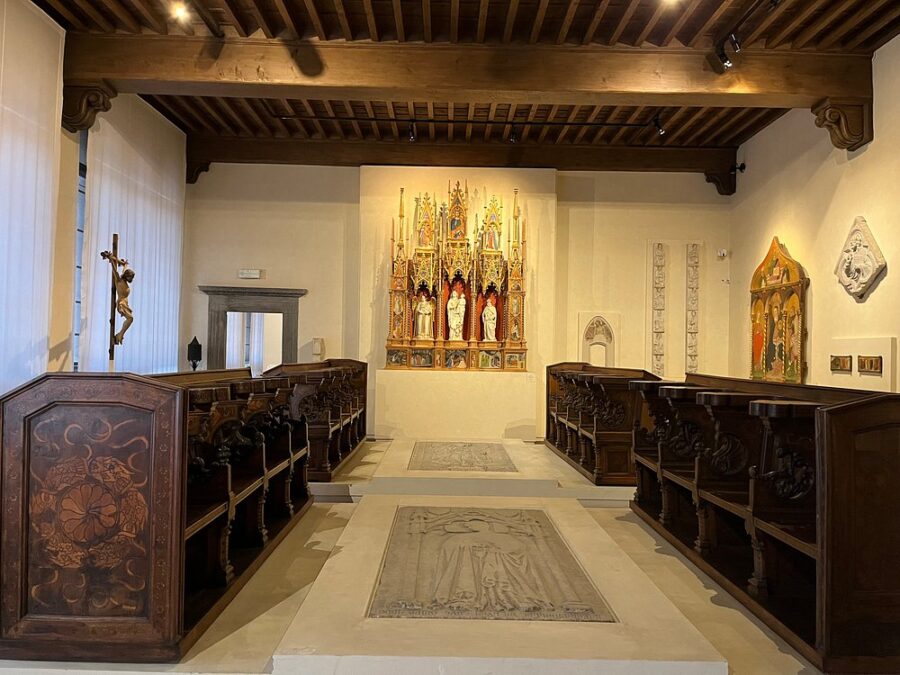
Siena’s Museo dell’Opera houses some of Italy’s finest medieval art. The star attraction is Duccio’s Maestà, a stunning gold-ground painting that changed Italian art forever. The Pinacoteca Nazionale showcases Sienese paintings from the 13th to 16th centuries.
Lucca’s museum scene focuses on local history and art. The Palazzo Mansi stands out with its baroque art collection and period furniture. The Villa Guinigi Museum tells Lucca’s story from Roman times through beautiful artifacts and paintings.
The Cathedral Museums in both cities protect priceless religious artworks. They display golden chalices, jeweled crosses, and ancient manuscripts that showcase each city’s rich spiritual heritage.
See Related: Pienza vs Siena: Which Hidden Tuscan Gem Offers the More Authentic Italian Experience?
Architectural Wonders

Both cities showcase distinct architectural styles that reflect their rich medieval past. Siena’s Gothic grandeur starkly contrasts with Lucca’s impressive military fortifications and Romanesque churches.
Siena’s Gothic Architecture

The city’s crown jewel is its stunning Duomo, built from black and white marble stripes that create a mesmerizing zebra-like pattern. This Gothic cathedral ranks among Italy’s most striking religious buildings.
The shell-shaped Piazza del Campo features a unique sunburst pattern made from red brick and travertine stone. Medieval towers rise above the piazza, with the 102-meter Torre del Mangia standing as one of Italy’s tallest secular towers from that era.
Gothic palaces line the narrow streets, marked by pointed arches and ornate window frames. Many buildings feature decorative elements carved from local stone.
Lucca’s Defensive Structures
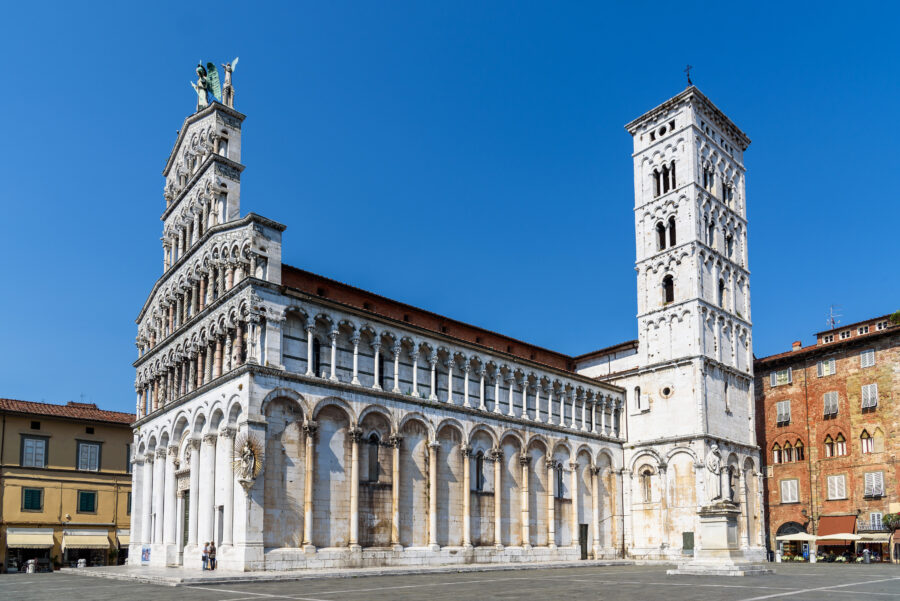
The perfectly preserved Renaissance walls encircle the entire city for 4.2 kilometers. These massive fortifications now serve as a public park where visitors can walk or bike along tree-lined paths.
San Michele in Foro church dominates the main square with its stunning façade. The church shows off elaborate tiers of marble columns, each slightly different from the others.
The unique Guinigi Tower stands out with its rooftop garden of oak trees. This 45-meter tower offers fantastic views of the city’s red-tiled roofs and medieval street pattern.
The city’s architecture blends Roman, Medieval, and Renaissance styles. Ancient Roman streets still form the backbone of Lucca’s layout, while churches showcase intricate Romanesque stone carvings.
Culinary Delights

Siena and Lucca showcase unique Tuscan flavors through local specialties and dining traditions. Each city offers distinctive culinary experiences that reflect its rich cultural heritage.
Traditional Dishes and Wines

Siena’s cuisine features rich game meats and handmade pasta dishes—the city’s famous pici, thick, hand-rolled pasta strands, pair perfectly with wild boar ragù. Ribollita, a hearty vegetable soup, warms visitors during cooler months.
Lucca takes pride in its Zuppa di farro, a filling soup made with barley, beans, and seasonal vegetables. The city’s signature dish is tortellini lucchesi, a meat-filled pasta served with meat sauce.
Wine lovers can sample Chianti Classico in Siena, while Lucca’s surrounding hills produce excellent Colline Lucchesi wines.
Best Dining Experiences in Siena and Lucca
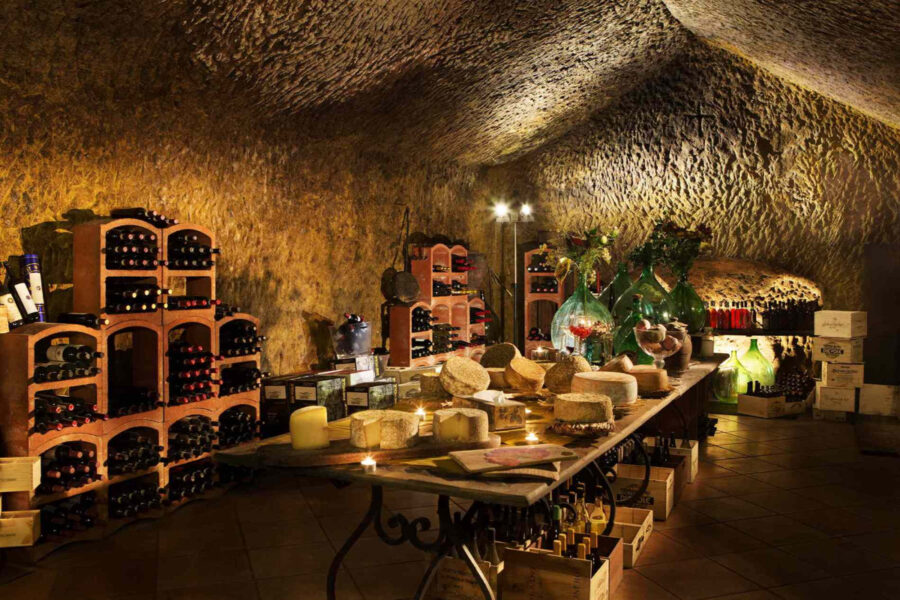
Siena’s best restaurants cluster around Piazza del Campo. La Taverna di San Giuseppe stands out for its authentic Tuscan menu and historic wine cellar setting.
Lucca’s dining scene thrives within its ancient walls. Small family-run osterias serve traditional recipes passed down through generations.
For a special meal in Lucca, try the restaurants along Via Fillungo. Many offer outdoor seating where you can enjoy your meal while watching local life unfold.
Street food deserves attention, too. Siena’s panforte (spiced fruit cake) and Lucca’s buccellato (sweet bread with raisins) make perfect portable snacks.
Shopping and Local Crafts

Siena’s main shopping area centers on Via Banchi di Sopra, a bustling street filled with boutiques selling designer clothes, leather goods, and accessories. The narrow medieval lanes branching off this main thoroughfare hide small shops offering local crafts and artisanal products.
Lucca’s shopping scene feels more laid-back and intimate. The city’s ancient streets house independent boutiques and family-run shops selling everything from handmade textiles to traditional ceramics.
Notable items to look for in Siena:
- Hand-painted ceramics
- Local wines and olive oils
- Leather bags and wallets
- Traditional Tuscan linens
Popular purchases in Lucca:
- Silk scarves and textiles
- Local olive oil
- Antiques and vintage items
- Handmade jewelry
Small artisan workshops dot both cities, where skilled craftspeople create unique pieces using time-honored techniques. These make perfect spots to find one-of-a-kind souvenirs and gifts.
Each city has its special shopping atmosphere. With its upscale boutiques, Siena attracts luxury shoppers, while Lucca draws those seeking authentic local crafts in a more relaxed setting.
The best shopping times are early morning or late afternoon when the streets are less crowded with tourists. Many shops close for a midday break between 1:00 PM and 3:30 PM.
Exploring the Surroundings
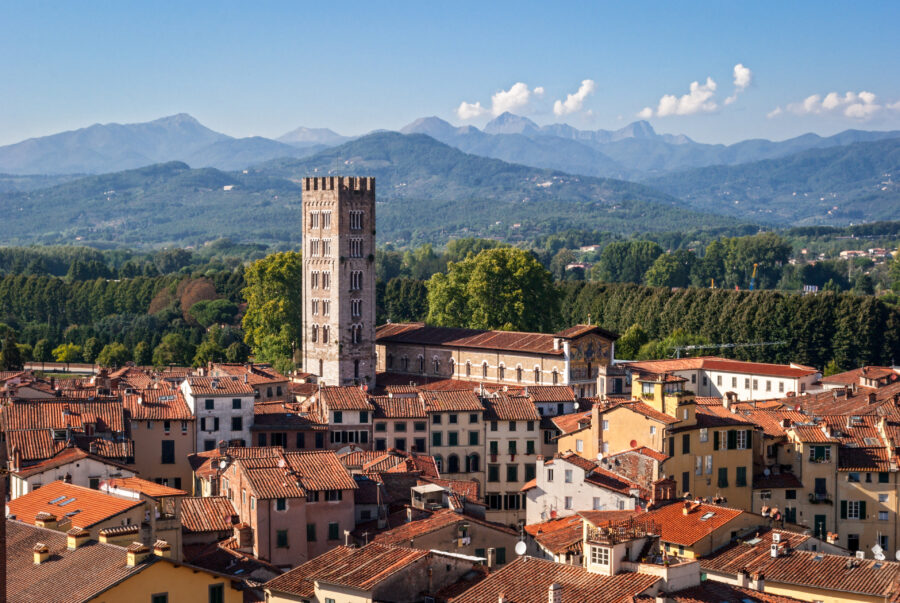
The regions around Siena and Lucca offer amazing adventures into the heart of Tuscany. Each city is a perfect base for exploring iconic hilltop villages, vineyards, and stunning natural landscapes.
Day Trips from Siena and Lucca
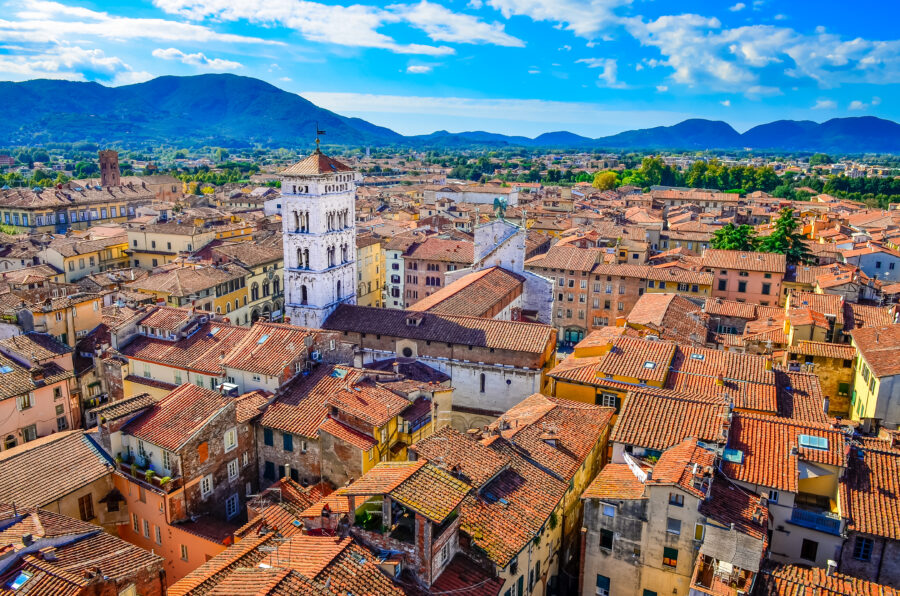
Siena’s central location makes it perfect for visiting San Gimignano, known for its medieval towers and world-famous gelato shops. The gorgeous Chianti wine region sits right at Siena’s doorstep, with endless opportunities for wine tasting tours.
Lucca’s position near the coast opens up different possibilities. Visitors can take easy day trips to Pisa to see its famous leaning tower. The stunning Cinque Terre coastal villages are just 2 hours away by train.
Nearby Towns and Natural Landscapes
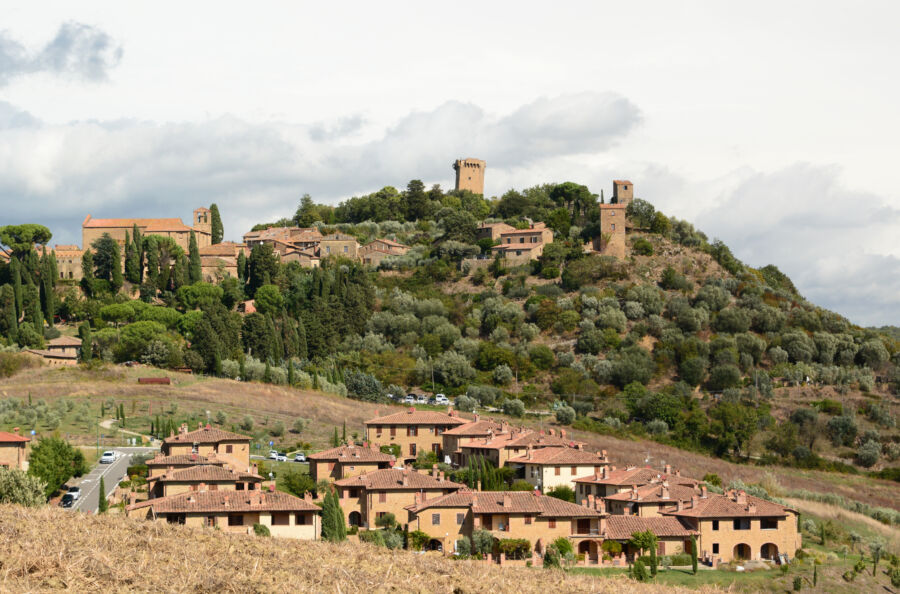
The rolling hills around Siena showcase the classic Tuscan countryside. Small towns like Monteriggioni offer glimpses of perfectly preserved medieval life. The Val d’Orcia region south of Siena features the iconic cypress trees and golden fields seen on postcards.
From Lucca, the Garfagnana valley presents a different side of Tuscany. This mountainous area offers excellent hiking trails and small villages like Barga. The impressive marble mountains of the Apuan Alps create a dramatic backdrop.
The San Michele church stands guard over Lucca’s surroundings. Its white marble facade glows at sunset, visible from many nearby viewpoints.
Book guided tours from either city to maximize your exploration of these beautiful areas.
See Related: Florence vs Lucca: Which Historic Tuscan City Should You Visit?
Nightlife and Entertainment
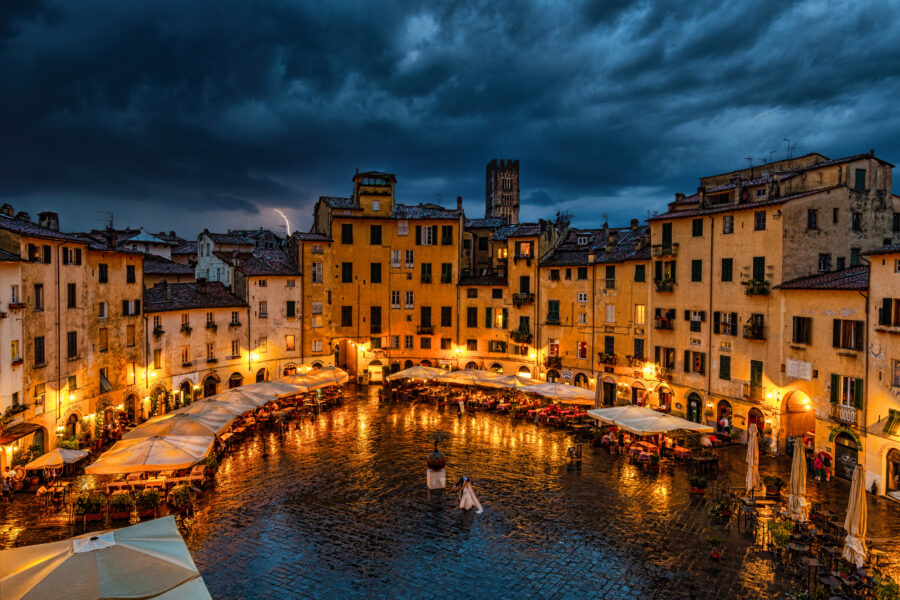
Siena and Lucca offer distinct after-dark experiences that blend historic charm with modern entertainment options. The cities come alive at night with bars, cultural performances, and seasonal events.
Vibrant Nightlife Scene

Lucca’s nightlife centers around Piazza Amfiteatro and Piazza San Michele. These historic squares transform into lively social hubs after sunset. The city gets especially buzzing during spring and summer when tourists fill the streets and outdoor cafes.
Siena’s evening scene is more spread out across its medieval center. Near Piazza del Campo, many wine bars and traditional taverns can be found. Students from the local university add energy to the nightlife, creating a fun mix of locals and visitors.
Cultural Events and Festivals

Siena hosts several evening concerts in its historic palaces and churches annually. The Palio horse race brings incredible nighttime celebrations, with neighborhood parties lasting well into the morning.
Lucca’s Summer Festival attracts world-famous musicians to perform in Piazza Napoleone. The city also features regular classical concerts in historic churches and theaters.
Accommodations and Lodging
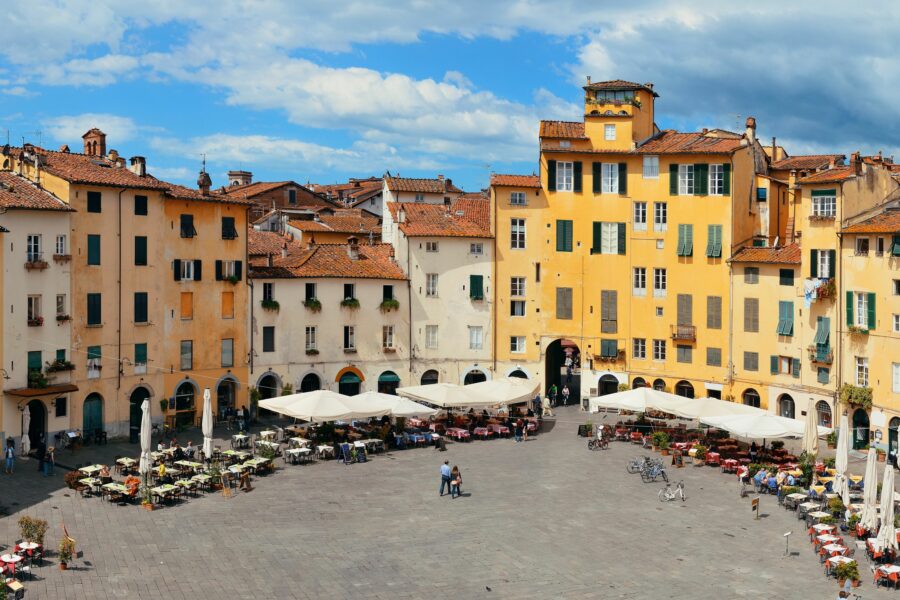
Hotels and apartments in Siena tend to be pricier than those in Lucca, especially during peak season. Many travelers successfully book monthly apartment rentals in both cities at discounted rates.
Siena’s historic center features boutique hotels in converted palazzos. The neighborhoods just outside the city walls offer more budget-friendly options.
Lucca provides excellent value with its mix of family-run guesthouses and rental apartments within the medieval walls. The city’s smaller size means most accommodations sit within walking distance of major attractions.
Both cities see rates spike during summer festivals, so book at least 3-4 months ahead for July and August stays.
Transportation and Accessibility

Siena’s steeper streets make walking more challenging. The historic center restricts car access, but efficient buses connect key areas.
Thanks to its flat terrain, getting around Lucca is easier. The car-free city center lets visitors explore on foot or by bike. Rental bikes make excellent transport for riding the famous wall path.
Trains connect both cities to Florence, though Lucca offers more frequent service. Siena’s bus network provides better access to smaller Tuscan towns.
Lucca’s train station sits just outside the walls, while Siena’s station requires a bus or taxi ride to reach the center.
See Related: Lucca vs Pisa: Which Historic Tuscan Gem Offers the Better Italian Experience?
Frequently Asked Questions
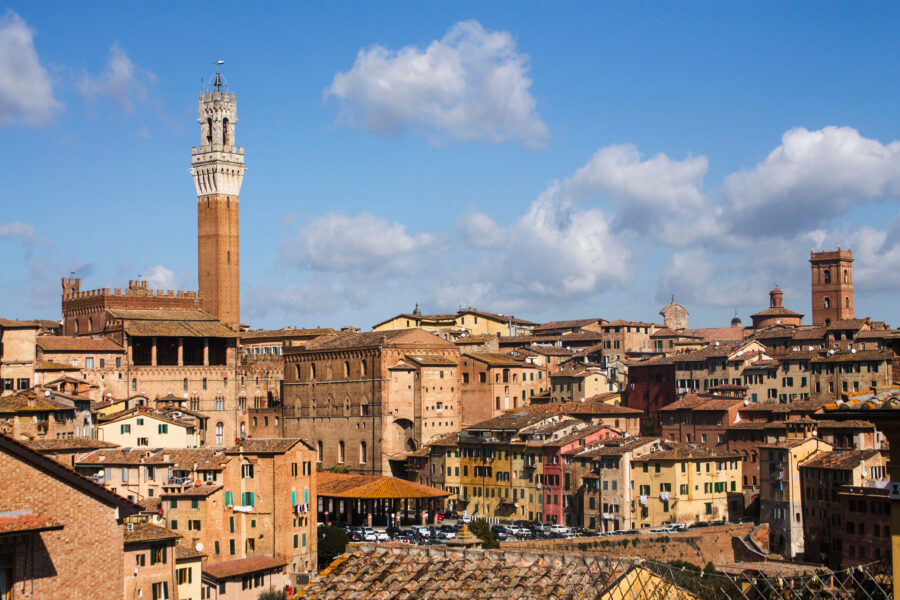
Lucca and Siena offer distinct attractions, transport links, and cultural experiences, making them special destinations in Tuscany. Each city maintains its medieval charm while providing modern amenities for visitors.
What activities can visitors enjoy during a day trip to Siena or Lucca?
Lucca stands out for its bike rides along the ancient city walls. Visitors love renting bicycles to circle the 4km tree-lined path while taking in city views.
In Siena, the main square, Piazza del Campo, draws visitors who relax on the brick pavement. Many people spend hours people-watching and admiring the medieval architecture.
Walking tours operate in both cities. Siena’s tours focus on Gothic buildings and the famous Palio horse race traditions. Meanwhile, Lucca’s tours highlight Roman ruins and Renaissance churches.
Which town is more convenient to reach via public transport, Siena or Lucca?
Both cities connect well to Florence by train and bus. Lucca sits between Florence and Pisa on the main rail line, with trips taking about 75 minutes.
Siena requires a regional train or bus from Florence. The bus often works better, taking 75-90 minutes through scenic Chianti countryside.
What are the unique historical highlights of Lucca compared to Siena?
Lucca preserves its Roman street grid and complete Renaissance walls. The city features unique architectural gems like the oval Piazza Anfiteatro, built on ancient arena foundations.
Siena showcases Gothic architecture and art from its peak as a banking center. The black-and-white marble cathedral and shell-shaped Piazza del Campo represent medieval urban design.
Can you compare the culinary experiences offered by Siena and Lucca?
Siena excels in traditional Tuscan cuisine with wild boar dishes and Chianti wines. Small wine bars called enoteche offer local wine tastings paired with pecorino cheese.
Lucca features distinctive local specialties like buccellato sweet bread and tortelli lucchese pasta. The city takes pride in its extra virgin olive oil production.
How do Lucca and Siena differ in terms of accommodation options for tourists?
Siena provides more hotel choices within medieval palaces. Many rooms offer views over tiled rooftops toward the Duomo or Piazza del Campo.
Lucca specializes in apartment rentals inside the walls. Visitors can live like locals in restored historic buildings with modern amenities.
The Guinigi Tower, topped with oak trees, provides fantastic views in Lucca. The botanical garden and small churches like San Frediano remain peaceful even in summer.
Siena’s hidden treasures include medieval fountains, quiet cloisters, and neighborhood churches with Renaissance art. The Civic Museum holds masterpieces but draws fewer crowds.


